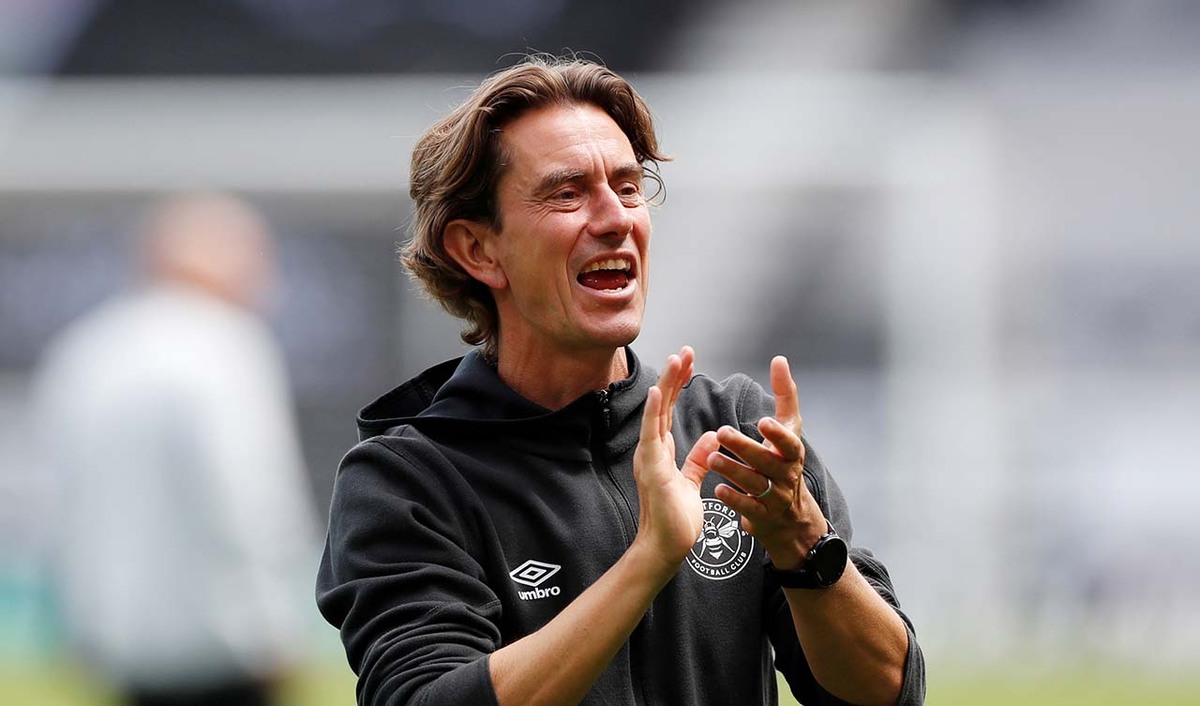




OUR BEST EVER OFFER - SAVE £100/$100
JOIN THE WORLD'S LEADING PROFESSIONAL DEVELOPMENT PROGRAMME
- 12 months membership of Elite Soccer
- Print copy of Elite Player & Coach Development
- Print copy of The Training Ground
Attacking transitions
This session is all about the principles behind offensive transitions, specifically the 3v2 offensive transition.
| Area | Just over half a pitch |
| Equipment | Balls, bibs, cones, 2 full size goals |
| No. of Players | Up to 14 players + 2 goalkeepers |
| Session Time |
Attacking transitions: 30mins |
This session is all about the principles behind offensive transitions, specifically the 3v2 offensive transition.
Firstly I will introduce the session by describing some of the overall principles that we use for offensive transitions at Brentford Football Club and then I will go on to explain the principles behind the specific attacking 3v2 situations and what we want to see from the players, before finally progressing to present the drill that we use to train for this.
It’s really important that everyone understands the theory behind our tactics because we need to have players who have the personality and the knowledge to think of our attacking organisation and options even when the team is defending.
COUNTER-ATTACK TACTICS
When we are defending it is important to organise the team for the moment we win the ball back and once we have regained possession, we need to consider how we can play a quick counter-attack.
The player who has picked up the ball has to think ‘forward’ if he can but it’s vital that he does not waste the first pass. He is usually unaware of the situation around him, therefore the best thing to do is to pass to a player who is free, rather than make a blind turn. Sometimes the best player to pass to is in front of him when he has his back to goal. That is okay – the player should make the simple pass first and then the team can think about playing forward quickly, but the most important thing is not to lose the ball.
Players need to quickly recognise whether the door is open or closed. If it’s closed, the team needs to protect the ball by playing the simple pass to the players that can be seen – playing away from pressure, or jumping a player to switch play and finish the counter-attack on the other side of the pitch.
If the door is open, the player on the ball should dribble or pass forward quickly. The team should play with a high tempo, making quick, deep runs and try to finish the counter-attack.
We want the players to understand the theory, before we work with them on the key principles for our attacking transitions.
What are the key things to look out for?
When we are counter-attacking 3v2 and the ball carrier is on one side of the pitch, we want to see deep runs from the number 9 and the opposite winger to drag the opponents away. One should run between the defenders and the other should make a wide run on the far side, as shown [1a].
1a
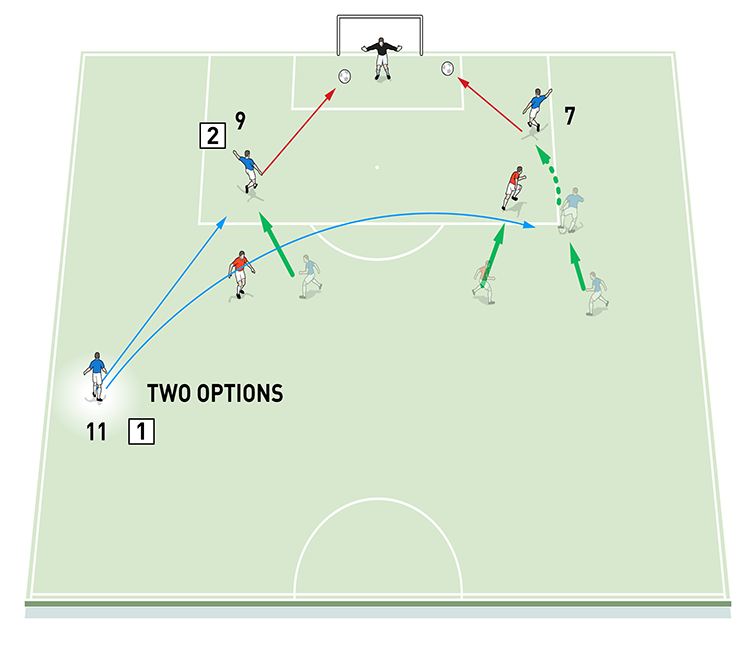
2. The number 9 and the number 7 should make deep runs to drag the opponents away to create passing opportunities for the number 11
When we are counter-attacking 3v2 and the ball carrier is attacking centrally, the attackers should force the defenders to either stay narrow to nullify the impact of a run between them (meaning the outside pass will be on) or encourage them to stay more open so they are closer to the outside players (meaning gaps will appear through the middle), as shown [1b].
1b
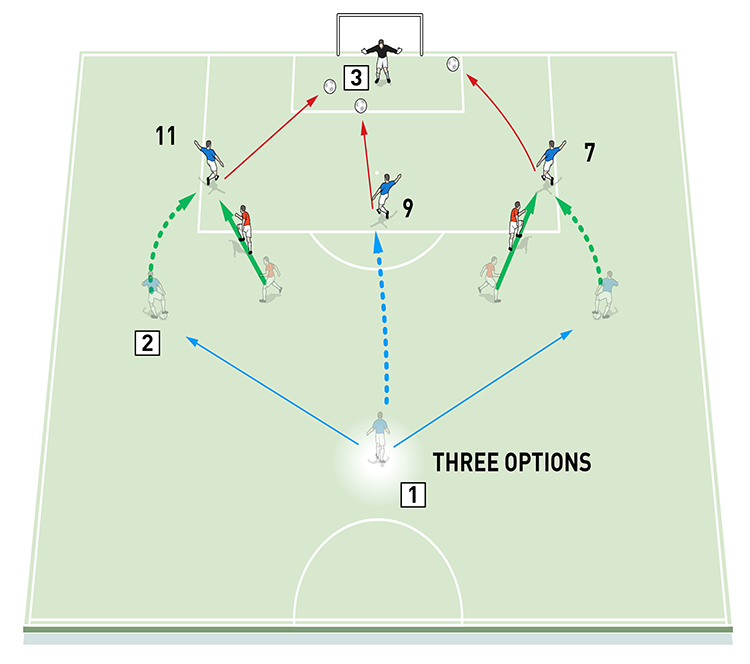
2. If the blue attackers force the red defenders to stay narrow to nullify the impact of a run between them, it means the outside pass will be on
3. If the defenders stay open to be closer to the outside attackers, gaps will appear through the middle for the number 9
ATTACKING TRANSITIONS DRILL
We set up a playing area of just over half a pitch, with a goal and a goalkeeper at each end. We’re using 14 outfield players split into two teams of seven, set up as shown.
We start with the red team in attack, with red players 1, 2 and 3 going up against blue defenders A and B. Player 1 starts play from the flank by passing back to the goalkeeper, who distributes to player 2 on the other flank. Player 2 comes inside to receive and passes to player 3, who lays the ball off to player 1 who has come inside to receive, as shown [2a]. Then player 1 must make a decision about how to play the 3v2 from that point – he is supported by players 2 and 3 in an attack against blue defenders A and B.
2a
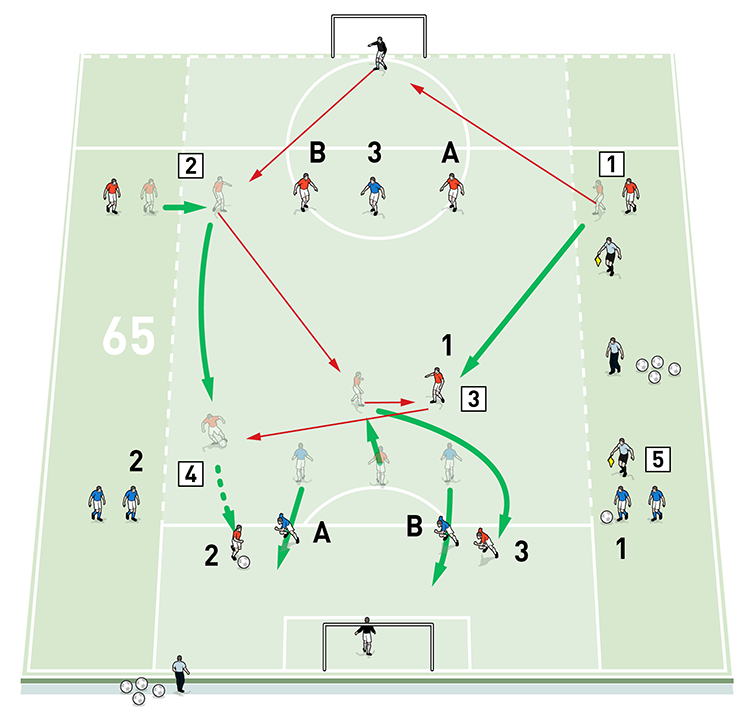
2. Red 2 receives from the keeper and passes to red 3 in the centre
3. Red 3 lays the ball off to red 1, who has come inside to receive. Red 1 must then decide how to attack 3v2
4. Red players 2 and 3 have made runs to support red 1 in an attack against blue defenders A and B
5. Additional coaches are positioned either side of the central coach to make offside calls
The following diagrams show the different possible conclusions to the same drill, depending on how the 3v2 attack progresses.
During the 3v2, if the blue defending team wins possession of the ball, a quick counter-attack is launched by blue defenders A and B, with blue wide players 1 and 2 coming in from the flank to support and blue forward player 3 spearheading the attack, as shown [2b]. This creates a 3v2 up front for the blues against their retreating opponents.
2b
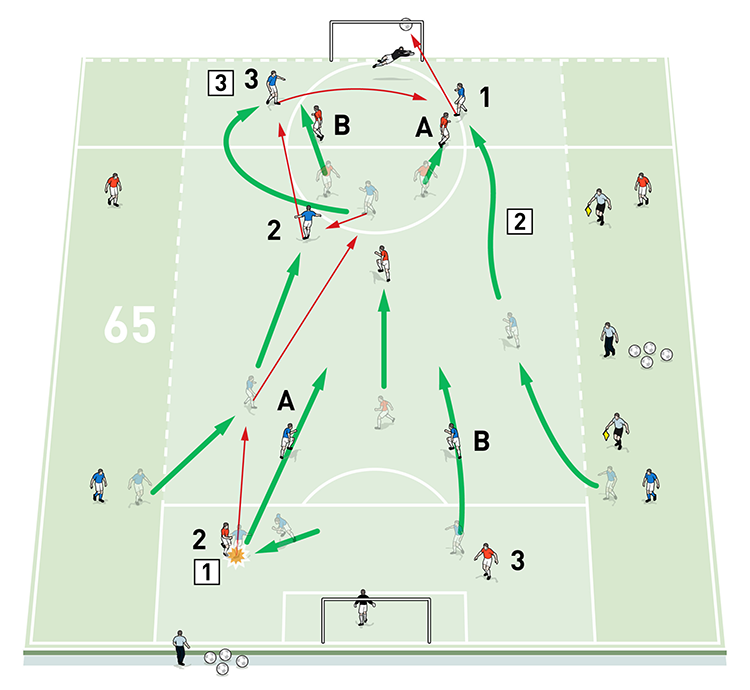
2. Blue wide players 1 and 2 come in from the flank to support
3. Blue forward player 3 spearheads the attack, making it a 3v2 counter-attack up front against the recovering reds
However, if the original build-up play results in a goal or if the ball goes out of play, then the coach feeds an extra ball to blue player 1 on the flank so he can launch a quick 3v2 counter-attack against the reds, as shown [2c].
2c
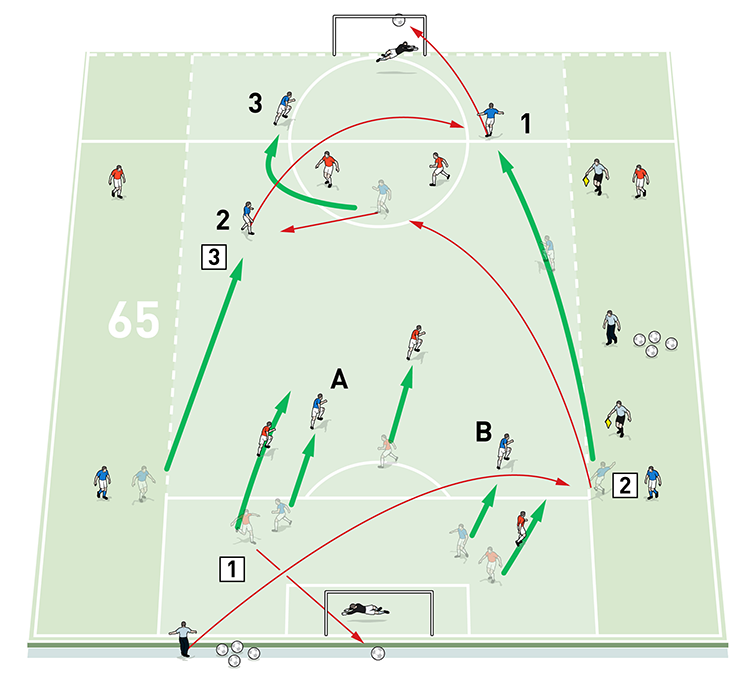
2. Blue 1 receives from the coach and launches a quick counter-attack against the reds
3. Blue player 2 comes inside to support the attack
We can progress the drill by changing the first pattern of play before the concluding 3v2.
We run this drill for up to 30 minutes.
Related Files
Editor's Picks
Attacking transitions
Deep runs in the final third
Using the goalkeeper in build-up play
Intensive boxes drill with goals
Penetrating the final third
Creating and finishing
My philosophy
Pressing initiation
Compact team movement
Coaches' Testimonials

Alan Pardew

Arsène Wenger

Brendan Rodgers

Carlos Carvalhal

José Mourinho

Jürgen Klopp

Pep Guardiola

Roy Hodgson

Sir Alex Ferguson

Steven Gerrard
Coaches' Testimonials

Gerald Kearney, Downtown Las Vegas Soccer Club

Paul Butler, Florida, USA

Rick Shields, Springboro, USA

Tony Green, Pierrefonds Titans, Quebec, Canada
Join the world's leading coaches and managers and discover for yourself one of the best kept secrets in coaching. No other training tool on the planet is written or read by the calibre of names you’ll find in Elite Soccer.
In a recent survey 92% of subscribers said Elite Soccer makes them more confident, 89% said it makes them a more effective coach and 91% said it makes them more inspired.
Get Monthly Inspiration
All the latest techniques and approaches
Since 2010 Elite Soccer has given subscribers exclusive insight into the training ground practices of the world’s best coaches. Published in partnership with the League Managers Association we have unparalleled access to the leading lights in the English leagues, as well as a host of international managers.
Elite Soccer exclusively features sessions written by the coaches themselves. There are no observed sessions and no sessions “in the style of”, just first-hand advice delivered direct to you from the coach.
